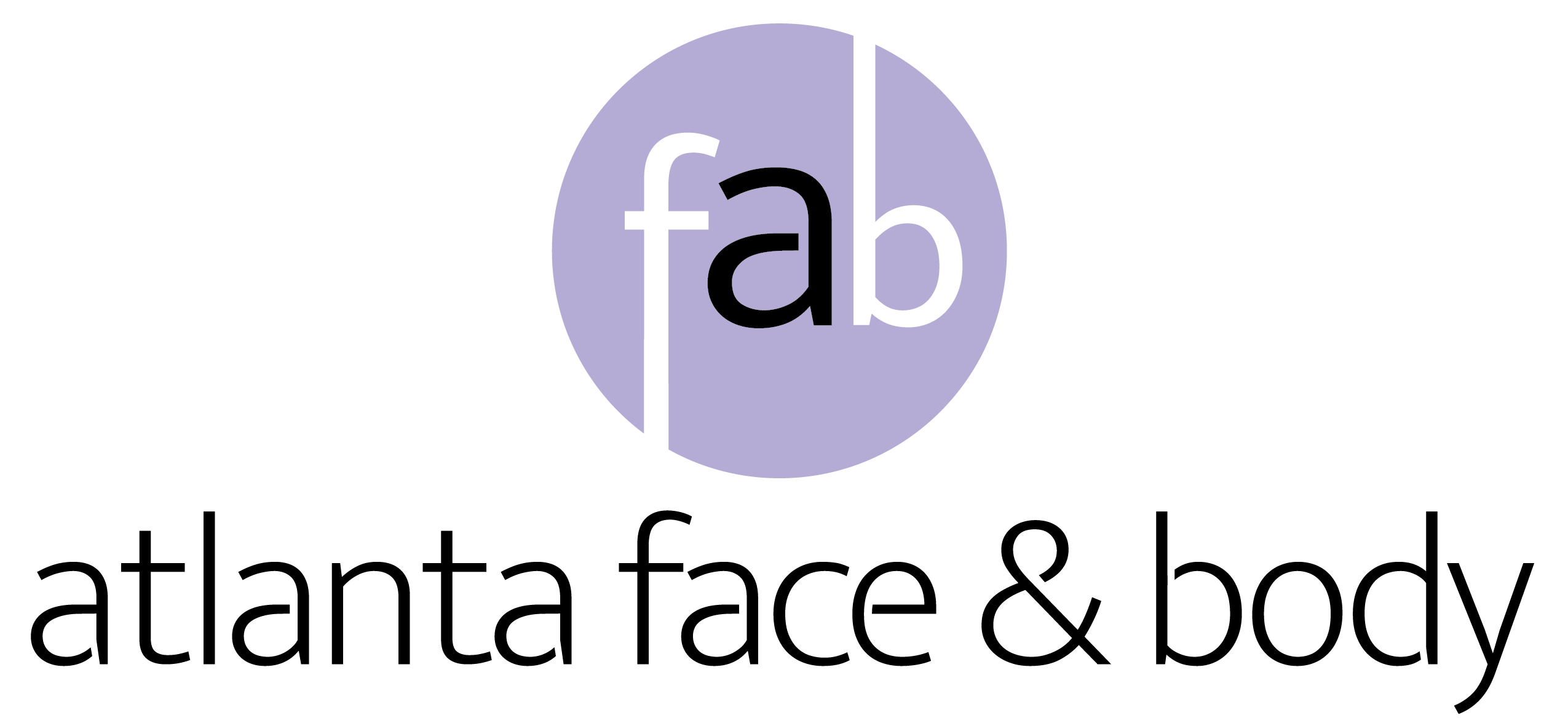Many people struggle with their appearance as they age, and saggy cheeks are one of the most common concerns. According to one study, 59% of Americans say they are not comfortable in their own skin.
This discomfort often stems from visible signs of aging, such as sagging cheeks, which can make a person look older than they feel. Addressing saggy cheeks can significantly improve one’s confidence and overall appearance.
In this blog post, our team at Atlanta Face & Body will explore various methods to achieve a youthful look, including non-surgical and surgical options. We’ll cover skincare routines, facial exercises, dermal fillers, and more invasive procedures like buccal fat reduction, cheek lifts, and fat transfer to the face. Let’s get started with these facial rejuvenation tips.
Causes of Saggy Cheeks
Saggy cheeks are a common issue that can affect anyone, but understanding what causes them can help you take the right steps to address the problem. To begin, we’ll look into the primary factors that contribute to saggy cheeks.
Aging
Aging is the most significant factor in the development of saggy cheeks. As we age, our skin loses its elasticity and the production of collagen and elastin decreases.
Collagen and elastin are proteins that help keep the skin firm and supple. The reduction in these proteins leads to skin becoming thinner and less able to retain its shape.
Additionally, the fat pads in our cheeks, which provide a youthful plumpness, start to shift downward. This shift contributes to a hollowed, saggy appearance.
Genetics
Genetics also play a crucial role in how our cheeks age. If your parents or grandparents had saggy cheeks, you might be predisposed to developing them as well.
Genetic factors determine the structure and strength of your skin, the distribution of facial fat, and how your skin ages over time. While you can’t change your genetics, knowing your family history can help you understand what to expect and plan accordingly.
Lifestyle Factors
Several lifestyle factors can accelerate sagging cheeks. Excessive sun exposure breaks down collagen and elastin, leading to premature aging.
Smoking also damages collagen and reduces blood flow to the skin, which speeds up the aging process. Additionally, a poor diet high in sugar and refined carbohydrates can negatively affect skin health by harming collagen.
Dehydration is another factor that can lead to saggy cheeks, as it makes the skin less elastic. Lack of sleep also disrupts the body’s natural repair processes, which can cause faster aging and sagging skin.
Signs of Saggy Cheeks
Recognizing the signs of saggy cheeks can help you take action before the issue becomes more pronounced. Here are the key indicators to look out for.
Hollow Cheeks
One of the first signs of sagging cheeks is the appearance of hollows under the cheekbones. As the fat pads descend and the skin loses volume, the area beneath the cheekbones can appear sunken. This hollowness can make the face look gaunt and older.
Deep Nasolabial Folds
Nasolabial folds are the lines that run from the sides of the nose to the corners of the mouth. As cheeks sag, these folds become more pronounced. The deepening of these lines is a clear sign that the cheeks are losing their youthful position and fullness.
Jowls
Jowls are the sagging skin that appears along the jawline. As the cheeks descend, they pull down the skin, creating jowls. This can lead to a less defined jawline and a heavier appearance in the lower face.
Loss of Cheek Definition
Another sign of sagging cheeks is the loss of definition in the cheekbones. High, prominent cheekbones are a hallmark of youth. As the cheeks sag, the cheekbones can become less defined, making the face appear more tired and aged.
Surgical Solutions to Saggy Cheeks
Surgical solutions are an effective way to address saggy cheeks. Here, we’ll explore three popular procedures that we provide at Atlanta Face & Body: buccal fat reduction, cheek lifts, and fat transfer to the face.
Buccal Fat Reduction
As we have noted above, saggy cheeks can significantly affect facial appearance, often leading to a less defined and youthful look. Buccal fat reduction is a surgical procedure aimed at addressing this concern by targeting excess fat in the lower cheeks. This fat, known as buccal fat pads, contributes to a rounder or overly full facial contour that can obscure cheekbones and create a less sculpted appearance.
During the procedure, small incisions are made inside the mouth, through which the surgeon removes the buccal fat pads. This approach minimizes visible scarring and reduces recovery time compared to procedures that require external incisions.
The results of buccal fat reduction are aimed at enhancing cheek contours and restoring a more natural transition from the cheekbones to the jawline. As swelling diminishes in the weeks following surgery, patients typically notice a more defined and youthful facial appearance.
This procedure is suitable for individuals seeking a permanent solution to saggy cheeks and who have realistic expectations about the outcomes achievable through surgical intervention.
Cheek Lift
A cheek lift, or midface lift, targets sagging skin and tissues in the middle part of the face. This procedure is designed to lift and tighten the area around the cheeks, reducing sagging and restoring a youthful contour.
During a cheek lift procedure, the surgeon makes incisions typically along the hairline or inside the mouth. Through these incisions, the underlying tissues are repositioned, and excess skin may be removed. This procedure usually takes about two to three hours and can be performed under general anesthesia or deep sedation.
The expected results of a cheek lift are a more youthful and refreshed appearance. The cheeks are lifted, reducing the appearance of nasolabial folds and providing a more defined cheekbone area. Full recovery can take several weeks, but the results are long-lasting, often making a significant difference in the overall facial appearance.
Pros of a cheek lift include a significant and lasting improvement in facial appearance, reduced signs of aging, and a more defined facial structure.
Fat Transfer to Face
Saggy cheeks can also be effectively addressed with fat transfer to the face, a procedure designed to restore lost volume and rejuvenate facial contours. This technique involves using the patient’s own fat, harvested from areas like the abdomen or thighs, to enhance areas of the face that have lost fullness due to aging or weight loss.
During the procedure, fat is first extracted through gentle liposuction, processed to purify it, and then carefully injected into targeted areas of the face. Common treatment areas for this procedure include the cheeks, temples, and under-eye hollows. This approach not only improves facial volume but also smoothens wrinkles and enhances overall facial harmony.
The results of fat transfer to the face are natural-looking and long-lasting, as the transferred fat integrates with existing tissues. Over time, the body reabsorbs a portion of the transferred fat, so multiple sessions may be required to achieve optimal results.
What Is the Impact of Saggy Cheeks?
Saggy cheeks can have more than just a physical impact-they can significantly influence our social interactions, professional confidence, and emotional well-being. Let’s highlight some of the ways that saggy cheeks can impact our lives.
Social Perception
The appearance of saggy cheeks can affect how others perceive us, often influencing first impressions and social interactions. People tend to make judgments based on facial appearance, and saggy cheeks may inadvertently convey signs of aging or fatigue.
This can lead to feelings of self-consciousness in social settings, impacting one’s confidence and ability to engage comfortably with others. Individuals with saggy cheeks might find themselves avoiding social situations or feeling judged, which can contribute to a sense of isolation.
Professional Confidence
In professional environments, confidence in one’s appearance can play a critical role in career advancement and success. Saggy cheeks may undermine professional confidence, potentially impacting job interviews, client interactions, and overall workplace dynamics.
Studies have shown that physical appearance can influence hiring decisions and perceptions of competence, making it essential for individuals to feel confident and presentable.
For many, saggy cheeks may lead to a lack of confidence when presenting ideas or networking with colleagues. This can hinder career growth and opportunities for advancement. Addressing saggy cheeks through cosmetic procedures or other means can restore confidence and improve one’s professional presence, ultimately enhancing job performance and satisfaction.
Emotional Well-being
The emotional impact of saggy cheeks extends beyond social and professional realms, affecting overall self-esteem and emotional well-being. Self-esteem is closely tied to how individuals perceive their appearance, with saggy cheeks potentially causing feelings of insecurity or inadequacy. This can lead to heightened levels of stress, anxiety, or even depression in severe cases.
Psychologically, individuals with saggy cheeks may experience negative self-talk or compare themselves unfavorably to others. Seeking treatment for saggy cheeks can alleviate these emotional burdens, promoting a more positive self-image and greater emotional resilience.
Non-Surgical Solutions to Saggy Cheeks
To finish up, it’s worth highlighting that there are non-surgical methods that can improve the appearance of saggy cheeks. The following approaches can rejuvenate facial appearance and can complement our surgical solutions.
Skincare Routine
Maintaining a consistent skincare routine is crucial for improving saggy cheeks. Regular cleansing removes dirt and impurities that can contribute to skin aging. Moisturizers enriched with hyaluronic acid or peptides help hydrate and plump the skin, reducing the appearance of sagging and promoting a smoother complexion.
Sunscreen is also essential to protect against UV damage, which accelerates skin aging and leads to saggy skin. Choosing a broad-spectrum sunscreen with SPF 30 or higher helps maintain skin elasticity and prevents further collagen breakdown.
A well-rounded skincare routine also includes the use of retinoids, which stimulate collagen production and improve skin texture over time. These products help minimize fine lines and wrinkles, contributing to a more youthful appearance. Consistency is key to seeing results, as daily skincare habits support long-term skin health and resilience.
Facial Exercises
Facial exercises are a natural way to strengthen facial muscles and combat saggy cheeks. These exercises target specific areas of the face, such as the cheeks and jawline, improving muscle tone and promoting a firmer, more lifted appearance.
For instance, cheek lifts involve smiling widely while keeping lips closed, which helps strengthen cheek muscles and define the cheekbones. The fish face exercise, where you suck in cheeks to create a fish-like shape, can enhance cheekbone definition and reduce sagging.
Jaw release exercises, which involve gently stretching the jaw by opening and closing the mouth, help alleviate tension in the jawline and improve overall facial symmetry. Regular practice of these exercises can lead to noticeable improvements in facial contour and firmness, making them a valuable addition to any skincare routine aimed at addressing saggy cheeks.
Dermal Fillers
Dermal fillers offer a non-surgical solution for individuals looking to restore volume and smooth out wrinkles in saggy cheeks. These injectable gels, typically containing hyaluronic acid, are strategically injected into targeted areas to add volume and lift sagging skin. The procedure provides immediate results with minimal downtime, making it a popular choice for enhancing facial contours without surgery.
One of the benefits of dermal fillers is their versatility. They can address different areas of concern, such as hollow cheeks or deep nasolabial folds, providing customized results tailored to individual facial anatomy.
While results are temporary and typically last several months to over a year, dermal fillers offer a safe and effective way to achieve a more youthful and rejuvenated appearance.
Reduce Cheek Sagging in Atlanta
As we have highlighted in this blog post, saggy cheeks can significantly impact one’s appearance and confidence, often making the face appear older or more tired. These changes can influence social interactions and professional perceptions, potentially affecting self-esteem and overall well-being.
Fortunately, there are effective treatments available to address saggy cheeks, ranging from non-surgical options like anti-aging skincare routines and facial exercises to more permanent solutions such as surgical procedures like buccal fat reduction, cheek lifts, and fat transfer.
Whether you’re seeking a non-invasive approach or considering surgical intervention, Atlanta Face & Body offers comprehensive care with a focus on achieving natural-looking results and enhancing your facial contours. Schedule a consultation today.











